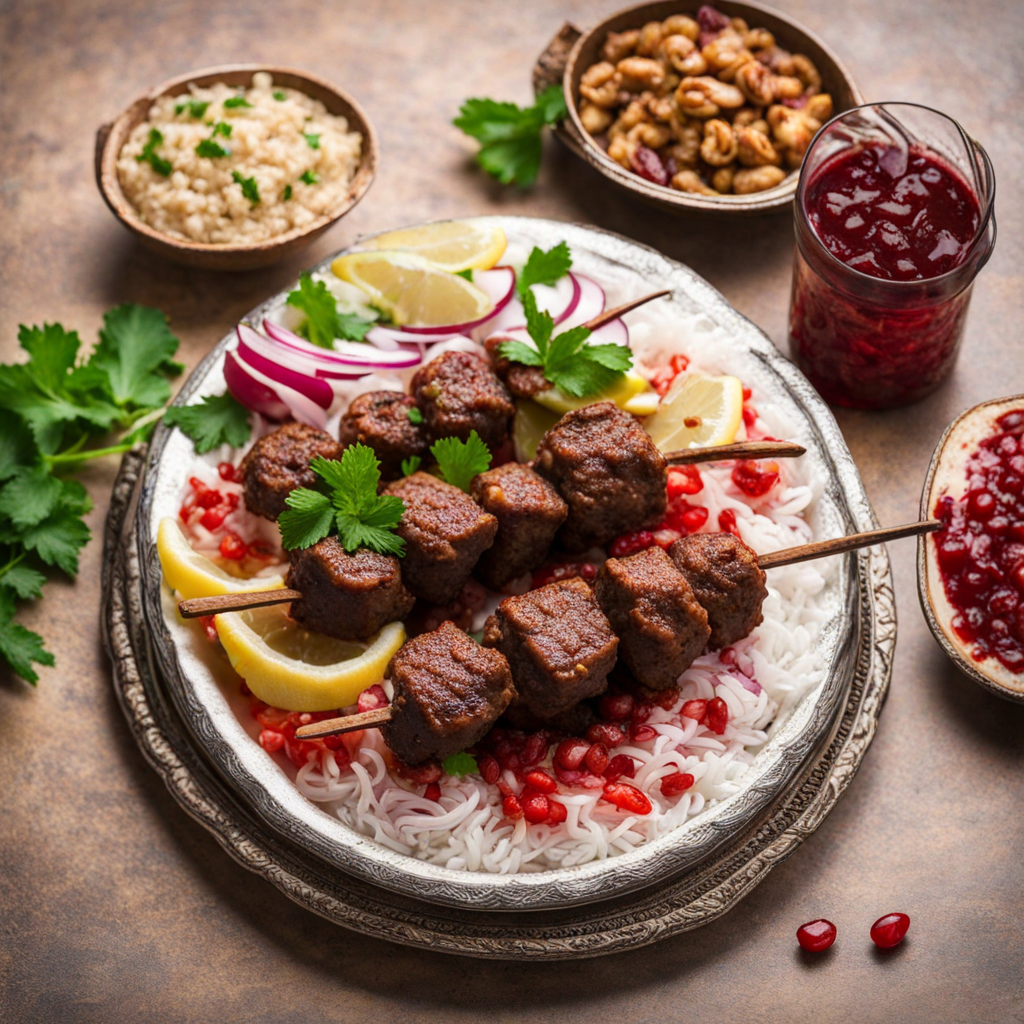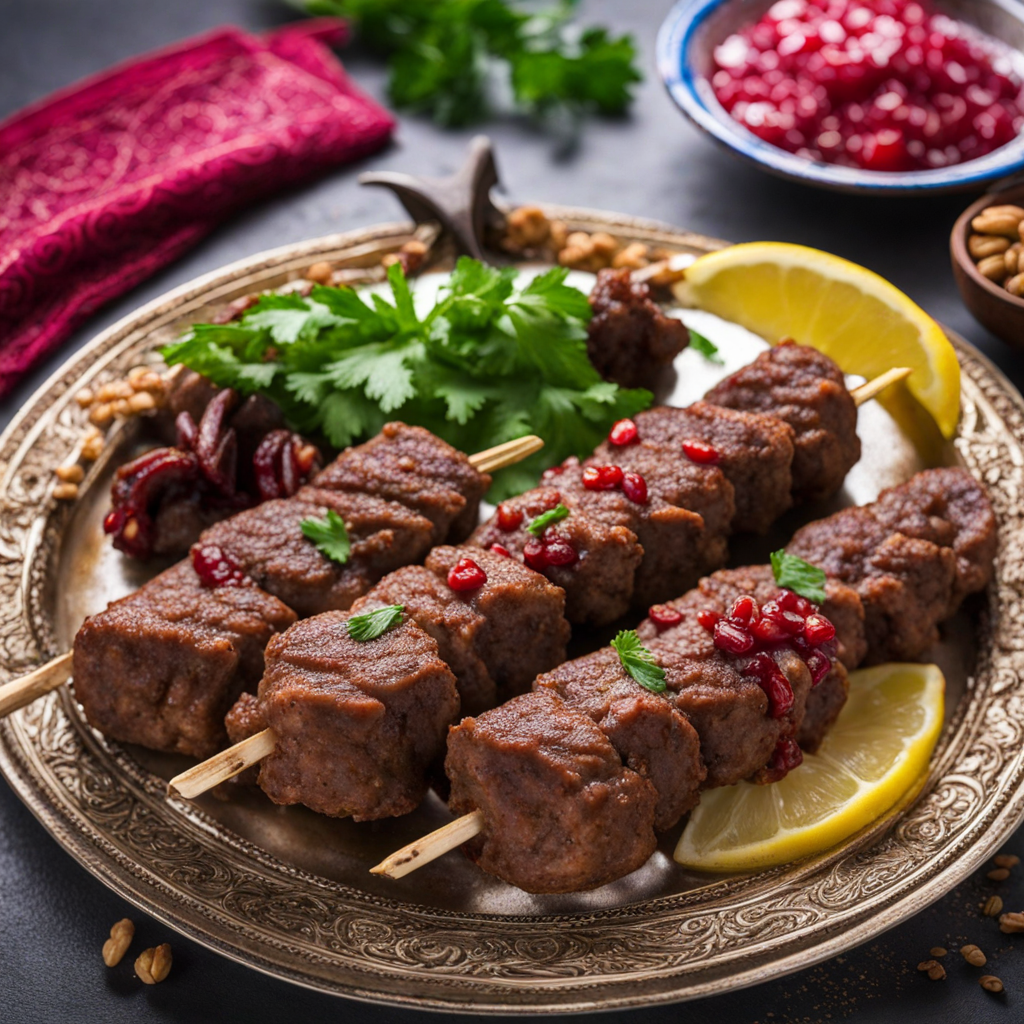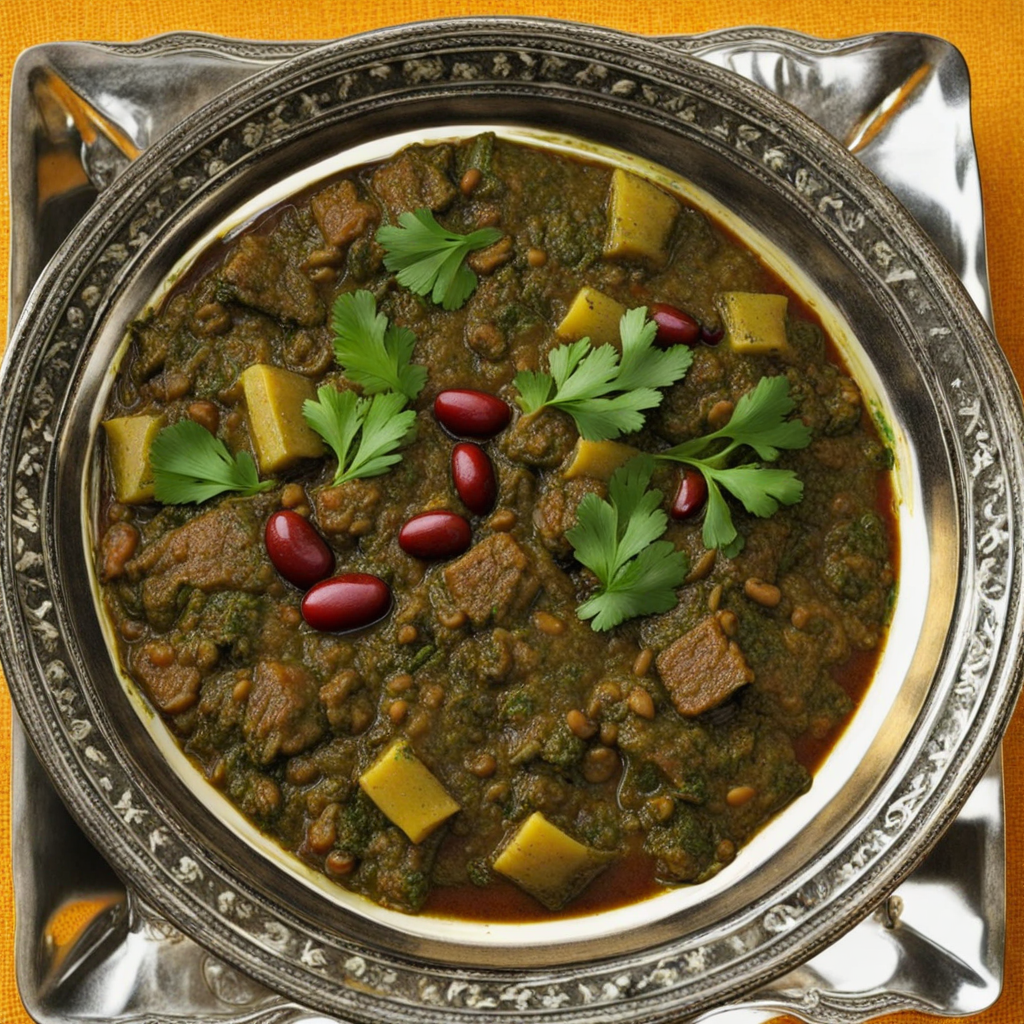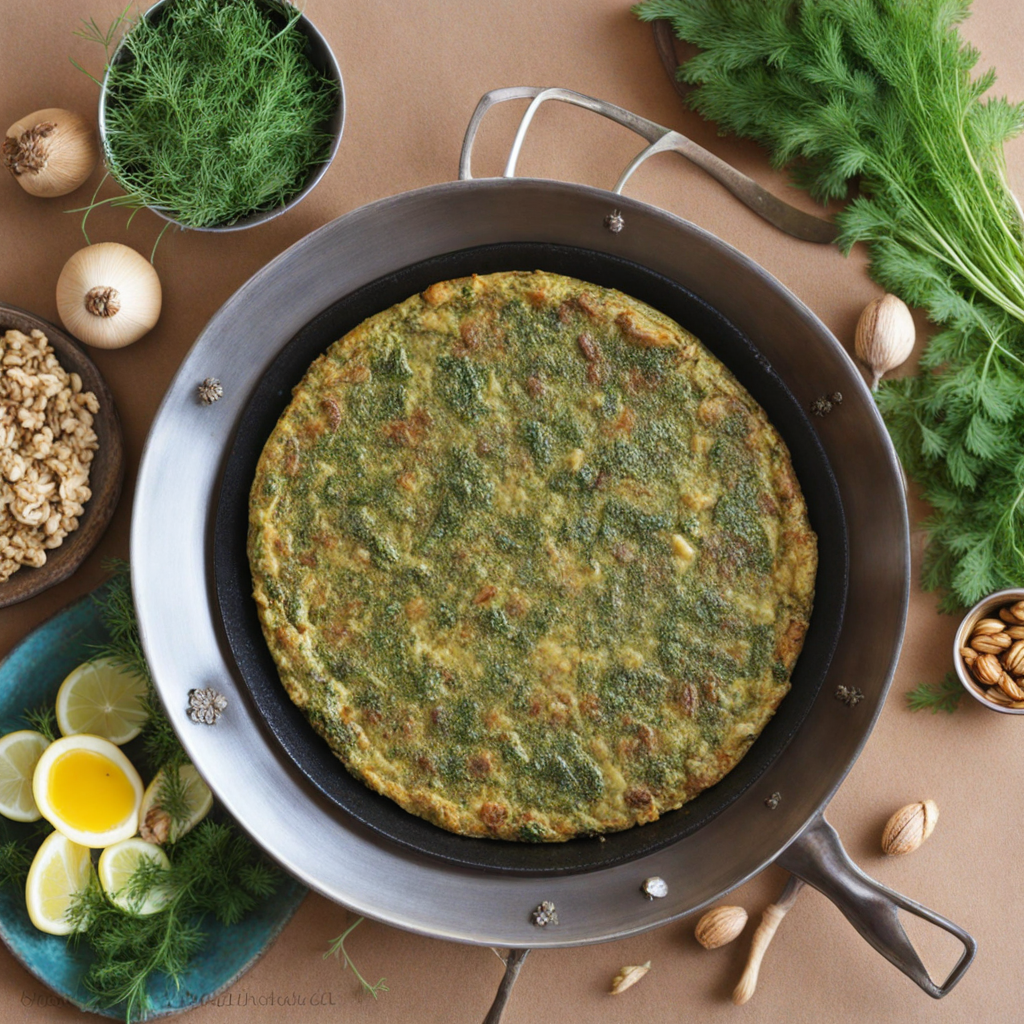Kabab Torsh
Kabab Torsh is a delightful Persian dish that tantalizes the taste buds with its unique flavor profile and aromatic spices. Originating from the northern regions of Iran, particularly Gilan, this dish is known for its marinated meat, typically lamb or beef, which is grilled to perfection. The meat is infused with a special marinade made from pomegranate juice, ground walnuts, and a blend of herbs such as parsley and mint. This combination not only tenderizes the meat but also imparts a sweet and tangy flavor that is truly distinctive. The grilling process adds a beautiful smoky aroma that complements the rich marinade, creating a dish that is both savory and slightly sweet. Kabab Torsh is often served with fluffy saffron-infused rice, fresh herbs, and grilled tomatoes, enhancing the overall dining experience. The contrast between the juicy, flavorful meat and the aromatic sides makes each bite a celebration of flavors and textures. For those looking to explore new culinary horizons, Kabab Torsh offers a perfect introduction to Persian cuisine. Its unique ingredients and preparation methods reflect the rich cultural heritage of Iran, making it a must-try for food enthusiasts. Whether enjoyed at a traditional Iranian restaurant or made at home, this dish promises a memorable journey through the vibrant tastes of the region.
How It Became This Dish
Origin of کباب ترش کباب ترش, pronounced "kebab torsh," hails from the northern regions of Iran, predominantly from the Gilan province along the Caspian Sea. The dish is a unique type of kebab that showcases the rich culinary traditions of this lush, verdant area, known for its abundant natural resources and agricultural diversity. The word "torsh" translates to "sour," reflecting the distinct flavor profile that characterizes this dish. The sourness primarily comes from the use of unripe grapes or pomegranate juice, which are essential ingredients in the marinade. This dish is traditionally made with lamb or beef, marinated to perfection before being skewered and grilled over open flames, imparting a smoky flavor that complements the tanginess of the marinade. The roots of کباب ترش can be traced back to ancient Persian cuisine, where grilling meats was a common practice. As the Persian Empire expanded, so did its culinary practices, integrating various regional flavors and techniques. The Gilan province, with its proximity to the Caspian Sea, became a center for diverse food influences, incorporating ingredients like fresh herbs, fruits, and nuts to create vibrant and flavorful dishes. The use of sour marinades in kebab dishes may have emerged as a means of preserving meat and enhancing its flavor, reflecting the resourcefulness of the local people. \n\n Cultural Significance کباب ترش is more than just a dish; it embodies the spirit and culture of the Gilani people. In Iranian culture, food holds a significant place in social gatherings and celebrations, serving as a medium for hospitality and community bonding. Sharing a meal, especially one as cherished as کباب ترش, fosters connections among family and friends. The preparation and consumption of this dish often take place during festive occasions, such as weddings and religious celebrations, highlighting its importance in the social fabric of Iranian life. The dish is also a representation of the Gilan province's agricultural richness. The region is famous for its lush landscapes, fertile soil, and diverse produce, which has made it a hub of culinary innovation. The inclusion of local ingredients, such as fresh herbs like cilantro and parsley, alongside the sour marinades, reflects the region's agricultural heritage. This connection to the land is a source of pride for the people of Gilan, and کباب ترش serves as a delicious testament to the synergy between the local environment and culinary practices. \n\n Preparation and Ingredients The preparation of کباب ترش involves a carefully crafted marinade that is key to achieving its signature flavor. Traditionally, the meat is marinated for several hours or even overnight in a mixture of unripe grape juice, chopped herbs, garlic, and spices. The tartness of the grape juice not only tenderizes the meat but also infuses it with a unique flavor that sets کباب ترش apart from other kebabs. The use of fresh herbs is critical, as they provide a fragrant and colorful element to the dish, enhancing both its aesthetic appeal and taste. Once marinated, the meat is skewered along with pieces of onion and sometimes bell peppers, before being grilled over an open flame. The grilling process is an art in itself, as it requires skill to achieve the perfect balance of charred exterior and juicy interior. The kebabs are often served with rice, flatbreads, or grilled vegetables, allowing for a communal and interactive dining experience. This method of preparation not only highlights the flavors of the ingredients but also showcases the traditional cooking techniques that have been passed down through generations. \n\n Development Over Time As Iranian cuisine has evolved, کباب ترش has adapted to modern tastes while retaining its traditional roots. In contemporary dining culture, the dish has gained popularity beyond the borders of Gilan, becoming a staple in Persian restaurants around the world. The globalization of culinary practices has led to variations in the dish, with chefs experimenting with different types of meat, marinades, and cooking methods. However, the essence of کباب ترش remains intact, reflecting the dish's resilience and adaptability. In recent years, there has also been a growing movement towards sustainable and locally-sourced ingredients in Persian cuisine. This shift aligns with the traditional practices of the Gilan region, where seasonal produce and ethical sourcing have always been a part of the culinary landscape. Chefs and home cooks alike are increasingly aware of the environmental impact of their food choices, leading to a resurgence in the appreciation for authentic, locally-inspired dishes like کباب ترش. This renewed interest not only preserves the cultural heritage associated with the dish but also promotes the importance of sustainability in modern cooking. \n\n Regional Variations While کباب ترش is most closely associated with Gilan, regional variations of the dish exist throughout Iran, each with its own unique twist. In other provinces, similar kebabs might use different marinades, spices, or cooking techniques, reflecting the diverse culinary landscape of the country. For instance, in southern Iran, kebabs are often marinated in yogurt and spices, resulting in a creamy texture and a different flavor profile. These variations highlight the adaptability of Persian cuisine, where local ingredients and customs influence the preparation of traditional dishes. The evolution of کباب ترش also mirrors broader trends in Iranian gastronomy, where chefs are increasingly looking to revive traditional recipes while incorporating contemporary techniques and flavors. This fusion of old and new allows for innovation while respecting the cultural significance of the dish. As food enthusiasts and chefs explore the potential of کباب ترش, they contribute to its legacy, ensuring that it remains a vital part of Iran's culinary heritage for future generations. \n\n Conclusion In essence, کباب ترش is a culinary gem that encapsulates the rich history, cultural significance, and evolving nature of Iranian cuisine. Its origins in the lush landscapes of Gilan, combined with the unique preparation methods and ingredients, make it a dish that is both deeply rooted in tradition and open to innovation. As it continues to be celebrated in homes and restaurants around the world, کباب ترش serves as a delicious reminder of the power of food to connect people and preserve cultural identities.
You may like
Discover local flavors from Iran







